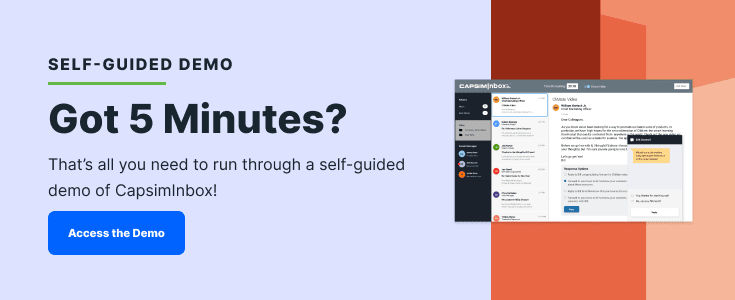How to Improve Your Employees' Soft Skills
December 26, 2017

Organizations recognize the role of soft skills in determining employee progression and productivity. Yet, the majority of companies do a poor job at developing soft skills within their ranks. According to Daniel White, an Organizational Development Consultant at Allen, Gibbs & Houlik (AGH), “The majority of attention in the management world has been focused more on hiring employees with those skills than developing them in current employees.”
Failure to Develop Within
Companies don’t focus lots of attention on developing soft skills in their current employees because they are traditionally difficult to develop.
Soft skills are hard to measure objectively and lack a well-defined set of competencies that can be taught. Even traditional training methods like assessment centers and self-reflection essays are subject to biases from participants and administrators. In comparison, hard skills are easier to learn and master because they have a well-defined set of competencies that apply to each and every individual developing a skill.
It’s only natural for companies to expect tangible results from investments in human capital. As a result, shifting their attention to hiring candidates who already possess soft skills means they can minimize the expenditure of critical resources on soft skill development plans that don’t guarantee valuable results.
Helping Employees Develop Soft Skills
As overwhelming as the soft skill development process can be, dedicated employees cannot only improve their career trajectory, but they can also improve their company’s productivity. Daniel White provides the following six-step process to soft skill development:
1. Willingness to Change
As with any self-development process, people have to be willing to change. If such willingness is not present, friction and negative results are unavoidable.
2. Education
Employees need to learn what constitutes soft skills, become aware of best practices, and be able to see the direct value in their development. The reading of self-development books like Stephen Covey’s Seven Habits of Highly Effective People can be a great starting point.
3. Evaluation
The evaluation of soft skills isn’t only meant to identify current skill proficiencies, areas of strength, and areas in need of improvement. It must include self-assessments to improve self-awareness and identify gaps between an individual’s self-view and reality. In addition, it must also include assessments with input from external sources.
4. Self-reflection
It’s necessary for employees to reflect on what they have learned about their self-view and current soft skill proficiency levels. As Daniel White bluntly asks, “Are they humble enough to realize they aren’t perfect? Are they willing to put in the effort to grow even though it may be difficult and uncomfortable?”
5. Goal Setting
With an eye on the future, employees should attempt to choose three to five tangible goals to work toward. These soft skill development goals should be shared with others, such as coworkers and supervisors, so observers can help measure progress and hold the employee accountable. As mentioned in an Administrate article, goals should be SMART (Specific, Measurable, Attainable, Relevant, Time-Bound) to make sure employees target the right skills and stay on track in their development process.
6. Practice
Soft skills have to be practiced over a long period of time. Employees should revisit goals and measure progress after a few months. While some failure is inevitable, growth will come. Daniel White best summarizes the value of embracing this process when he states, “In the end, the time invested will be worth it – both to the employees involved and the company’s bottom line!”
The Soft Skill Development Process in Action
Capsim’s CapsimInbox, a simulation-based assessment, follows certain aspects of the six-step process to objectively measure an individual’s proficiency in leading, problem solving, communicating organizing, and initiating. Let’s take a look how.
Education – CapsimInbox provides participants with the precise definition of the five soft skills mentioned above. In addition to learning what constitutes each soft skill, participants are able to see the value in developing these skills as they directly drive their employability and promotability.
Evaluation – the tool utilizes a self-assessment, meant to increase self-awareness, which allows participants to recognize how they view themselves in regard to the five key soft skills. The self-assessment is followed by an objective inbox simulation that serves to identify current skill proficiencies. Participants are able to combine the results from the self-assessment and inbox simulation to identify strength, weaknesses, and gaps between their self-view and reality.
Goal Setting – the Individual Development Plan (IDP) of CapsimInbox guides participants through the creation of development goals using the S.M.A.R.T. criteria (Specific, Measurable, Achievable, Realistic, and Timely). Participants are encouraged to use external sources, like coworkers and supervisors, as part of measuring their developmental progress.
Practice – the IDP is a place where participants cannot only set initial developmental goals, but can also measure progress and revisit such goals. Through the combination of the self-assessment, inbox simulation and the individual development plan, CapsimInbox provides participants the actionable feedback and next-step advice that is needed for true soft skill development.
The objective measuring and development of soft skills can be accomplished with CapsimInbox. Consider incorporating this tool into your training programs to allow your current employees to learn about the most sought-after soft skills, improve accurate self-awareness, discover their current skill proficiencies, and set goals that will guide their soft skill development.
Instead of averting all your attention to external candidates, experience how you can help your current employees improve their career trajectory and improve your company’s productivity with CapsimInbox. To learn more about this soft skill assessment and its ability to nurture meaningful soft skill development, click here. You can also fill out the form below to request a demo where we can discuss your soft skill development goals and answer any questions you have.



.png?width=80&name=1-questions%20(1).png)